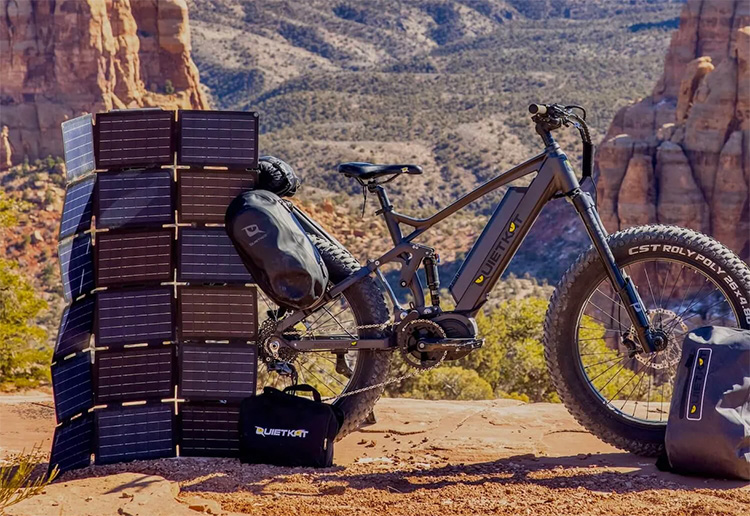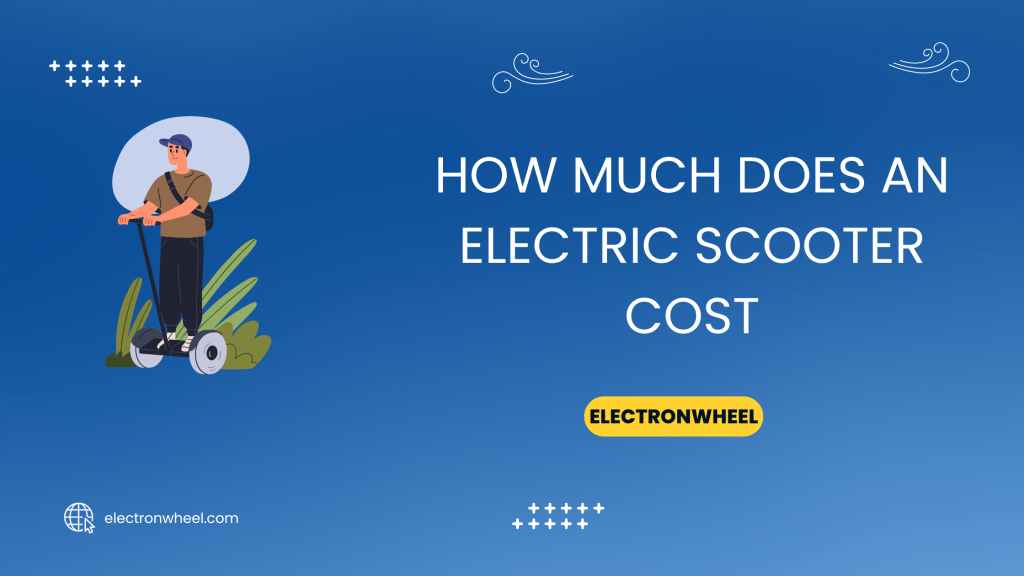This post contains affiliate links, we'll earn compensation if you make a purchase using them at no additional cost to you 😊
Knowing how to charge an e-bike without a charger may be a lifesaver to overcome a situation of unexpected battery drain.
From portable power banks to makeshift car chargers, you have more options than you think to get your e-bike battery juiced up in a pinch.
In this article, we’ll explore 8 different methods for charging an e-bike battery without the normal charger. While these workaround charging solutions aren’t ideal for regular use, they can get you out of a jam when your battery dies away from home without the charger.
Keep reading to learn how to squeeze every last bit of charge out of a “dead” e-bike battery and get yourself rolling again using these battery charger alternatives. With a bit of creativity, you can get your e-bike powered up even in a charger emergency.
In this blog post, I have covered the following methods:
- Power Bank
- Solar Panel
- Charging Station
- Car Charger
- Portable Generator
- Jumpstart Ebike
- Peddling
- Trickle Charger
8 Methods To Charge Your eBike Without Charger In 2025
Here are some methods to charge an eBike without a charger.
1. Power Bank
One of the simplest ways to charge an e-bike battery without a charger is by using a portable power bank. Power banks designed for charging phones and tablets can also work for e-bike batteries. The key things to look for are the power bank’s voltage output and capacity.
Most e-bike batteries are 36V or 48V. Ensure the power bank has enough voltage output to match the voltage of your e-bike battery. For capacity, a 20,000 mAh or higher power bank would provide at least some charge. The higher the power bank capacity, the more charge it can provide to increase the e-bike range.
To use a power bank, first, turn off the e-bike. Connect the power bank to the charging port on the e-bike battery using a compatible adapter cable. Many e-bikes come with a USB charging cable that can plug into a power bank.
Charge until the power bank is depleted. This method may not fully charge the e-bike battery but can provide enough extra juice to get you home.
2. Solar Panel
Can you charge an e-bike with a solar panel or solar bank? Potable solar banks and panels are another option for charging e-bike batteries on the go. These devices have solar panels that charge an internal battery. Many models have standard USB ports and outputs for charging laptops, power tools, and more.

Look for a solar bank with an output voltage that matches your e-bike battery and at least a 20,000 mAh capacity. Higher capacity means more potential charging power. Connect the solar bank to your e-bike battery and place the solar panels in direct sunlight. Pointing the panels towards the sun will provide the fastest charging speed.
One downside of solar banks is slow e-bike charge times. It may take several hours in direct sunlight to provide a full charge. But even a partial charge can help when you’re stuck without a charger.
3. Charging Station
If you find yourself near an electric vehicle (EV) charging station, there’s a chance it may work with your e-bike battery. Many public EV stations have both standard electrical outlets and J-1772 connectors.
The electrical outlets on EV charging stations are often high-powered. If you have the e-bike’s charging cable with you, plugging it into the EV station outlet may provide a decent recharge. Just make sure the outlet matches the charging cable.
Some e-bike batteries use the same J-1772 charge port as EVs. Check if your e-bike’s charging port is compatible with the J-1772 plug. If so, you can directly connect the charge station to the bike. EV stations deliver high-speed Level 2 charging that can quickly top up your e-bike battery.
4. Car Charger
Did you drive your car to where you’re stuck with a dead e-bike battery? Try using your car to charge it back up. This works similarly to using a power bank. You’ll need an adapter cable that plugs into your car’s 12V outlet. The other end should have the right connector for your e-bike battery port.
With the e-bike turned off, connect the adapter cable between the car’s 12V outlet and the e-bike battery. Let it charge for a while until the battery has some juice. Keep the car running during charging to avoid draining the car battery, too. The lower voltage means charging will be slow, but a car outlet can provide enough power to get you home.
5. Portable Generator
For quick charging without a charger, a portable gas generator is very effective. Make sure the generator has a 12V DC output with enough amperage for your bike battery charge. If not, check if the generator has a 110V AC outlet that matches your e-bike charging cable.
With the e-bike off, connect the generator’s 12V DC output to the battery charge port. Or plug your charging cable into the 110V outlet if available. Run the generator until the battery reaches a sufficient charge level. Just be careful not to overcharge past the recommended level for your battery type. Generators provide faster charging than most makeshift methods.
The downsides are generators are less portable, and you’ll need to keep gasoline on hand. But in a pinch, without a charger, they can quickly get your e-bike battery juiced up.
6. Jumpstarting eBike
Jumpstarting an e-bike battery works much like jumpstarting a car battery. You can use a car battery for an e-bike battery charge. Jumpstarting should only be done with lead-acid batteries. Lithium-ion batteries can be damaged if jumpstarted improperly.
To jumpstart, connect the positive terminals of the two batteries using a jumper cable. Connect the negative terminals with another cable. Turn on the bike, providing the charge for a few minutes to allow some power transfer.
Keep a close eye on the dead battery during charging. Once it shows signs of life, disconnect the cables immediately. Allowing batteries to continue charging after jumpstarting can damage them. This method provides limited charge, so only use jumpstarting to borrow enough power to return home and fully charge the dead battery.
7. Charge the Electric Bike By Pedaling
You can’t directly charge e-bikes with pedaling. This only works for pedal-assist e-bikes with regenerative braking, not those with throttle-only motors. Pedaling essentially activates regenerative braking in reverse, charging the battery while slowing you down.
Pedaling and braking alone won’t completely recharge an empty battery. At most, you may be able to add 5-10 miles of charge. But when you’re stuck far from home with a dead battery, a few extra miles can make the difference. Use pedaling as an absolute last resort to creep home or the nearest charging point.
8. Trickle Charger
A trickle charger provides a very slow, low amperage charge over many hours. They aren’t designed to juice up an e-bike battery quickly. But in a pinch, a trickle charger can add a small amount of charge overnight.
The key specs to check are the charger’s amperage and voltage. You want a maximum of 2 amps, and it must match your battery voltage. Connect the charger to your e-bike battery and leave it overnight – about 8 hours should provide a few miles of charge. While inconvenient, a trickle charge can rescue a dead battery just enough to return home.
Repeated trickle charging will diminish your battery’s lifespan over time. Only use this method as an occasional last-ditch solution, not your regular charging routine. But when caught without a charger, it beats getting stranded.
Related Reads
Conclusion: Follow The Above Ways To Cherege E-Bike Without a Charger
Dead e-bike batteries are annoying, but not at the end of your ride. With the right adapters and chargers, you can use available power banks, outlets, and even your pedal power to provide a charge. While these makeshift methods aren’t ideal, they can get you out of a jam when your usual charger isn’t available.
The next time your e-bike battery dies, try Jumpstarting from a car, plugging into a power bank, or pedaling home slowly. With some creativity, you can make your bike battery charge without the actual charger and get back to riding. So don’t let a dead battery kill your plans – use these tips to get rolling again.
FAQs
Charging an e-bike battery with a power bank takes a very long time – often 8 hours or more for a full charge. For a faster charge, use a solar bank, car charger, or EV station, which provides more power.
Yes, you can ride an e-bike without the battery installed. It will function like a regular manual pedal bike. This works for mid-drive motor e-bikes. But pedaling an e-bike without a battery offers more resistance and no power assistance.
Your best household item for charging an e-bike without its charger is a power bank or solar charger for phones/tablets. Check the voltage and capacity to ensure compatibility. Other items like car batteries or small generators may work in a pinch but are less convenient and portable.
Most airlines allow e-bike batteries on planes but with regulations on battery size and voltage. Batteries under 300 watt-hours (Wh) can often travel installed on the bike, while larger batteries may need to be removed and carried on.
Use the original charger that came with your electric bike and plug it into a regular wall outlet to charge the removable battery, following any specific instructions in your owner’s manual regarding proper charging time and storage. Charge the battery after each use and avoid overcharging to preserve battery life.


